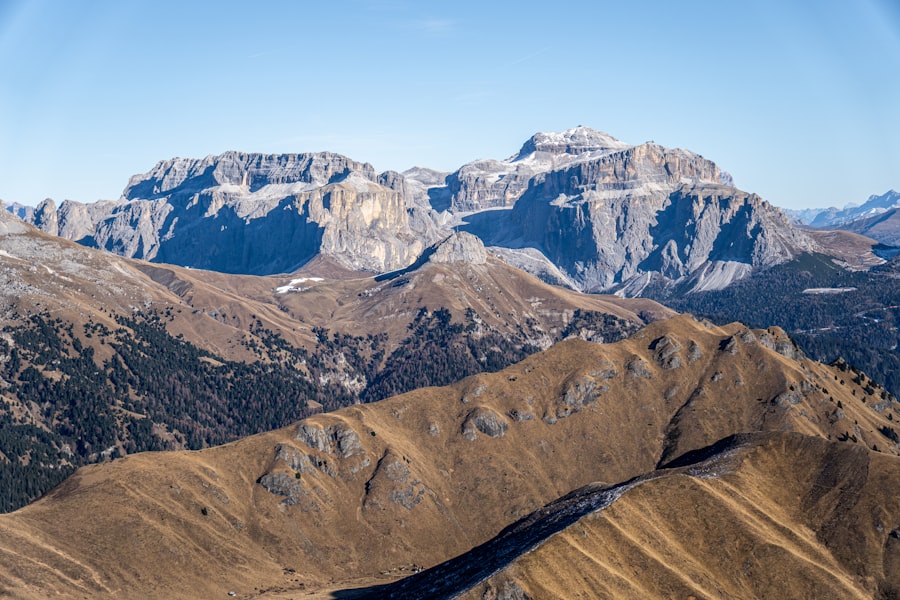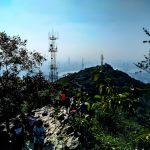Download links
How to install Preserving the Oldest Living Cultural Landscape: Banaue Rice Terraces APK?
1. Tap the downloaded Preserving the Oldest Living Cultural Landscape: Banaue Rice Terraces APK file.
2. Touch install.
3. Follow the steps on the screen.
Description
The Banaue Rice Terraces, often referred to as the “Eighth Wonder of the World,” are a remarkable feat of engineering and agriculture that date back over 2,000 years.
The construction of these terraces is believed to have begun around 2000 B.C., showcasing the ingenuity and resilience of the Ifugao culture.
The terraces are not merely agricultural fields; they represent a deep connection between the Ifugao people and their land, embodying centuries of tradition, spirituality, and communal effort. The rice terraces are a testament to the Ifugao’s understanding of their environment.
This system not only maximizes agricultural output but also minimizes soil erosion, demonstrating an early form of sustainable farming. The terraces are intricately designed, with each level serving a specific purpose in the cultivation process. Over generations, the Ifugao have passed down their knowledge of rice cultivation, which is deeply intertwined with their cultural identity and social structure.
The terraces have become a symbol of pride for the Ifugao people, representing their heritage and their ability to adapt to and thrive in a challenging landscape.
Key Takeaways
- The Banaue Rice Terraces were built over 2,000 years ago by the Ifugao people without the use of modern tools and machinery.
- Threats to the preservation of the Banaue Rice Terraces include environmental degradation, population decline, and lack of government support.
- Efforts to preserve the Banaue Rice Terraces include UNESCO World Heritage Site designation, community-based conservation projects, and sustainable farming practices.
- The Banaue Rice Terraces hold great cultural and spiritual significance for the Ifugao people, serving as a symbol of their identity and heritage.
- Sustainable tourism is crucial for the preservation of the Banaue Rice Terraces, as it provides economic opportunities for the local community while minimizing environmental impact.
Threats to the Preservation of Banaue Rice Terraces
The Impact of Modernization and Urbanization
One of the most pressing issues is the impact of modernization and urbanization. As younger generations migrate to urban areas in search of better economic opportunities, traditional farming practices are being abandoned. This shift not only leads to a decline in rice production but also results in the deterioration of the terraces themselves. Without regular maintenance and cultivation, the structures become vulnerable to erosion and collapse, threatening the very existence of this cultural treasure.
The Devastating Effects of Climate Change
Climate change poses a significant risk to the rice terraces. Changes in weather patterns, including increased rainfall and prolonged droughts, can disrupt the delicate balance of the irrigation systems that sustain the terraces. The Ifugao farmers have historically relied on traditional knowledge to adapt to seasonal changes; however, the rapid pace of climate change presents challenges that may exceed their adaptive capacity.
Natural Disasters: An Immediate Threat
Furthermore, natural disasters such as landslides and typhoons can cause immediate and devastating damage to the terraces, leading to loss of crops and further exacerbating food insecurity in the region. The combination of these threats puts the very existence of the Banaue Rice Terraces at risk, and it is essential that we take action to preserve this cultural heritage site for future generations.
Efforts to Preserve Banaue Rice Terraces

In response to these threats, various efforts have been initiated to preserve the Banaue Rice Terraces and ensure their sustainability for future generations. Local government units, non-governmental organizations, and community groups have come together to implement programs aimed at revitalizing traditional farming practices. These initiatives often include training workshops for young farmers, focusing on sustainable agricultural techniques that respect both the environment and cultural heritage.
By fostering a sense of pride in traditional practices, these programs aim to encourage younger generations to remain in their communities and continue cultivating the rice terraces. Moreover, there has been an increasing emphasis on community-based tourism as a means of generating income while promoting cultural heritage. By inviting tourists to experience the beauty and significance of the rice terraces, local communities can create economic opportunities that support both preservation efforts and traditional lifestyles.
Guided tours often include educational components that highlight the history and cultural practices associated with rice cultivation, fostering a deeper appreciation among visitors. This approach not only helps sustain the local economy but also raises awareness about the importance of preserving this unique cultural landscape.
Importance of Banaue Rice Terraces to the Ifugao People
| Aspect | Importance |
|---|---|
| Cultural Heritage | The Banaue Rice Terraces are a symbol of the Ifugao people’s rich cultural heritage and traditions. |
| Livelihood | The terraces provide a sustainable livelihood for the Ifugao people through rice farming and tourism. |
| Social Cohesion | The terraces serve as a focal point for community gatherings and traditional rituals, fostering social cohesion. |
| Environmental Stewardship | The Ifugao people have been practicing sustainable farming techniques on the terraces for generations, demonstrating their commitment to environmental stewardship. |
The Banaue Rice Terraces hold profound significance for the Ifugao people beyond their agricultural value. They are deeply embedded in the cultural identity and spiritual beliefs of the community. The terraces are not merely fields; they are sacred spaces that reflect the relationship between humans and nature.
The Ifugao believe that their ancestors inhabit these lands, and rituals are often performed to honor them and seek blessings for bountiful harvests. The cultivation of rice is intertwined with various cultural practices, including festivals and ceremonies that celebrate planting and harvesting seasons. Furthermore, the rice terraces serve as a social framework for the Ifugao community.
The collective effort required to maintain and cultivate the terraces fosters a strong sense of community and cooperation among families. Each terrace is typically owned by a family or clan, but its maintenance often involves collaboration with neighbors. This communal approach strengthens social bonds and reinforces cultural values such as reciprocity and mutual support.
The terraces thus represent not only an agricultural achievement but also a living testament to the social fabric that binds the Ifugao people together.
Sustainable Tourism and Banaue Rice Terraces
Sustainable tourism has emerged as a viable strategy for promoting both economic development and cultural preservation in Banaue. By attracting visitors who are interested in experiencing authentic cultural practices, local communities can generate income while ensuring that traditional knowledge is passed down through generations. Sustainable tourism initiatives often emphasize responsible travel practices that minimize environmental impact and respect local customs.
Tourists are encouraged to engage with local farmers, participate in traditional activities such as rice planting or harvesting, and learn about the intricate systems that sustain the rice terraces. Moreover, sustainable tourism can play a crucial role in raising awareness about the challenges facing the rice terraces. By educating visitors about issues such as climate change, urban migration, and environmental degradation, tourism can foster a sense of global responsibility among travelers.
Many organizations are now working to create partnerships between local communities and international stakeholders to promote conservation efforts while providing economic benefits. This collaborative approach not only supports local livelihoods but also ensures that the cultural heritage embodied in the rice terraces is preserved for future generations.
Future Challenges in Preserving Banaue Rice Terraces

Looking ahead, several challenges remain in preserving the Banaue Rice Terraces amidst changing socio-economic conditions and environmental pressures. One significant concern is balancing modernization with tradition. As younger generations increasingly seek opportunities outside their ancestral lands, there is a risk that traditional knowledge may be lost.
Efforts must be made to create viable economic alternatives within rural communities that do not compromise cultural practices or lead to further abandonment of agricultural lands. Additionally, climate change continues to pose an existential threat to these ancient structures. As weather patterns become more unpredictable, farmers may struggle to adapt their practices accordingly.
It is essential for local communities to have access to resources and support systems that enable them to implement adaptive strategies effectively. This may include investing in research on climate-resilient crops or developing innovative irrigation techniques that can withstand extreme weather events. In conclusion, while there are significant challenges ahead for the preservation of Banaue Rice Terraces, there is also hope through community engagement, sustainable tourism initiatives, and increased awareness of environmental issues.
The future of these terraces will depend on collaborative efforts that honor both their historical significance and their role in sustaining the Ifugao culture for generations to come.
If you are interested in exploring more about the beauty of Southeast Asia, you may want to check out this article on the top-rated apps for discovering hidden gems like the Banaue Rice Terraces. These ancient terraces are a testament to the ingenuity and skill of the Ifugao people, and they are a must-see destination for any traveler. Immerse yourself in the rich history and stunning landscapes of the Philippines by visiting this UNESCO World Heritage Site.
FAQs
What are the Banaue Rice Terraces?
The Banaue Rice Terraces are ancient terraces carved into the mountains of Ifugao in the Philippines. They are often referred to as the “Eighth Wonder of the World” and are a UNESCO World Heritage Site.
How were the Banaue Rice Terraces created?
The terraces were hand-carved over 2,000 years ago by the Ifugao people using minimal equipment, such as stones and wood. The terraces were created to make the mountainous terrain suitable for rice cultivation.
What is the significance of the Banaue Rice Terraces?
The Banaue Rice Terraces are not only a stunning example of ancient engineering and agricultural practices, but they also hold cultural and historical significance for the Ifugao people. The terraces are a symbol of their rich heritage and traditional farming methods.
Can visitors explore the Banaue Rice Terraces?
Yes, visitors are welcome to explore the Banaue Rice Terraces. There are hiking trails and viewpoints that offer breathtaking vistas of the terraces and the surrounding mountains. It is important to respect the local customs and environment while visiting.
What is the best time to visit the Banaue Rice Terraces?
The best time to visit the Banaue Rice Terraces is during the dry season, which typically runs from March to May. The terraces are at their greenest during this time, and the weather is generally more favorable for hiking and sightseeing.





